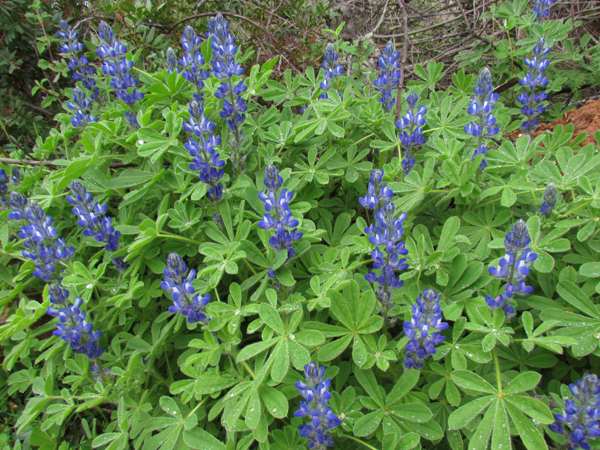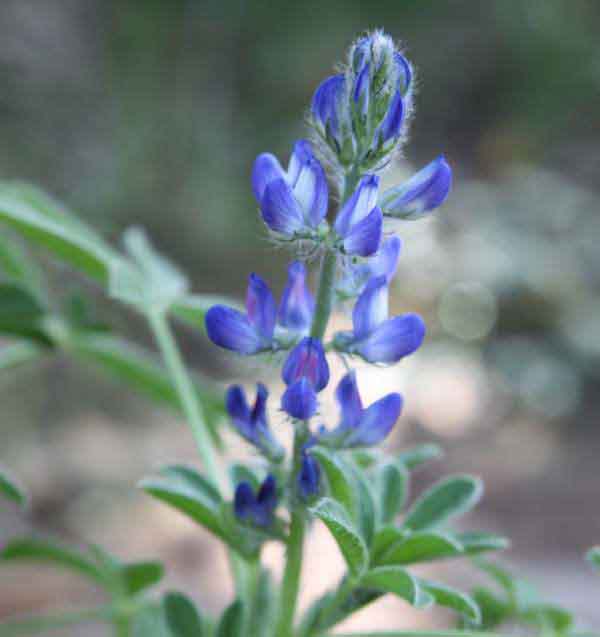Lupinus micranthus - Bitter Blue Lupin
Phylum: Magnoliophyta - Class: Equisetopsida - Order: Fabales - Family: Fabaceae

Also referred to as the small-flowered Lupin or Hairy Lupin, Lupinus micranthus is an annual growing to a height of 20-40cm.

The compound leaves are palmate with 5-8 leaflets; individual leaflets and 1.5-3 cm long. The upper leaf surfaces are somewhat hairy while the lower surfaces are covered by many appressed hairs.
Habitat
This gregarious lupin often lines field margins and woodland edges; it sometimes paints fallow fields with vast swathes of brilliantt blue.
Distribution
A member of the Pea Family, Fabacae, the Bitter Blue Lupin is common in the Mediterranean Region and parts of northern Africa, but can also be found parts of southern in France.

Flowering times
Depending on location, Bitter Blue Lupins can be seen in flower from March until June. The specimens shown on this page were growing in the Algarve region of southern Portugal, and the photographs were taken in late March and early April.
Please Help Us: If you have found this information interesting and useful, please consider helping to keep First Nature online by making a small donation towards the web hosting and internet costs.
Any donations over and above the essential running costs will help support the conservation work of Plantlife, the Rivers Trust and charitable botanic gardens - as do author royalties and publisher proceeds from books by Pat and Sue.

